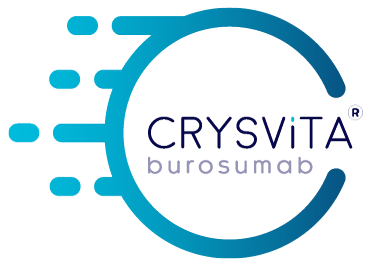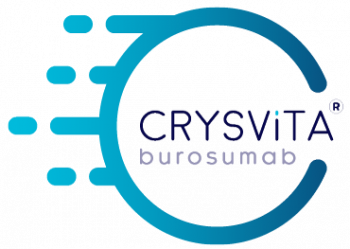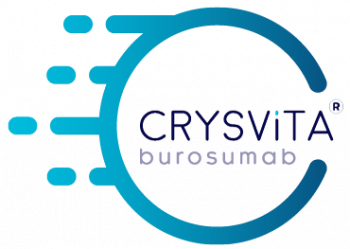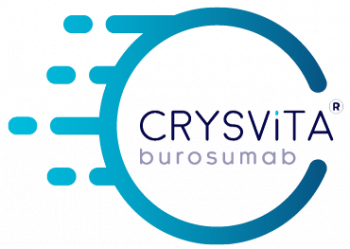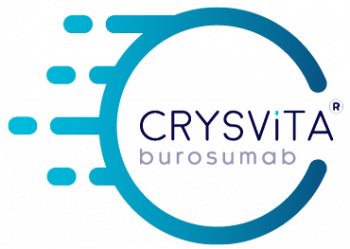Welcome to the CRYSVITA.Asia website
As of 3 May 2021, CRYSVITA® has been approved by Health Sciences Authority Singapore (HSA) for the treatment of X-linked hypophosphatemia (XLH) in adult and pediatric patients 1 year of age and older.1
Product is approved in EU/US/Japan and selected markets in Asia Pacific. Local approved prescribing information may differ. Please refer to local approval status and prescribing information before prescribing.
What is XLH?
XLH is a rare, hereditary,* progressive and life-long phosphate wasting disorder, caused by mutations in the PHEX gene that leads to excess FGF23.2–7
*In approximately 20–30% of cases, XLH occurs spontaneously and there is no family history8-10
How does CRYSVITA® work?
CRYSVITA binds to and inhibits the biological activity of FGF23 restoring renal phosphate reabsorption and increasing the serum concentration of 1,25 dihydroxy vitamin D. 1
Why CRYSVITA®?
The efficacy and safety of CRYSVITA® in children (aged ≥1 year) and adults with XLH has been studied in a global clinical development programme, comprising phase II and phase III clinical trials.11-16
Starting CRYSVITA®
CRYSVITA® (burosumab) is indicated for the treatment of X-linked hypophosphatemia (XLH) in adult and pediatric patients 1 year of age and older. 1
Resources to support the management of XLH
Resources include a dosing table, TmP/GFR factsheet, key facts summary, RSS and RGI-C factsheet, XLH Product Brochure.
Adverse Event Reporting:
Adverse Events should be reported to Kyowa Kirin Asia Pacific Pte. Ltd. by email at … or alternatively contact us using the following Enquiry Form.
1. CRYSVITA® (burosumab). Based on Singapore Package Insert. Kyowa Kirin Asia Pacific Pte Ltd; May 2021 2. Beck-Nielsen SS, et al. Orphanet J Rare Dis. 2019;14:58. 3. Carpenter TO, et al. J Bone Miner Res. 2011;26:1381–88. 4. Endo I, et al. Endocr J. 2015;62:811–16. 5. Haffner D, et al. Nat Rev Nephrol. 2019;15:435–55. 6. Martin A & Quarles LD. Adv Exp Med Biol. 2012;728:65–83. 7. Rafaelsen S, et al. Eur J Endocrinol. 2016;174:125–36. 8. Whyte MP, et al. J Clin Endocrinol Metab. 1996;81:4075–80. 9. Rajah J, et al. Eur J Pediatr. 2011;170:1089–96. 10. Dixon PH, et al. J Clin Endocrinol Metab. 1998;83:3615–23. 11. Carpenter TO, et al. N Engl J Med. 2018;378:1987-98. 12. Whyte MP, et al. Lancet Diabetes Endocrinol 2019;7:189-99. 13. Imel EA, et al. Lancet. 2019;393:2416–27. 14. Insogna KL, et al. J Bone Miner Res. 2018;33:1383–93. 15. Portale AA, et al. Calcif Tissue Int. 2019;105:271–84. 16. Insogna KL, et al. J Bone Miner Res. 2019;34:2183–91.
